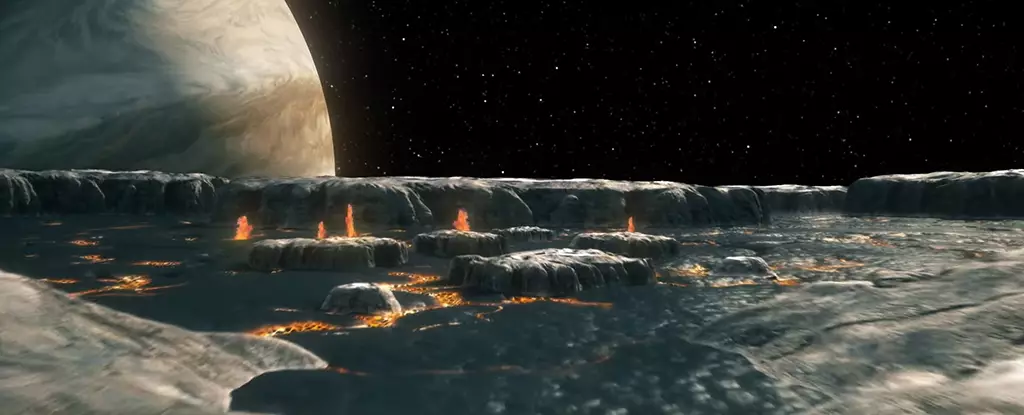Io, one of Jupiter’s many moons, is nothing short of a geological wonder. Renowned as the most volcanically active body in our Solar System, this rugged moon boasts an astonishing array of around 400 volcanoes and numerous lava flows crisscrossing its surface. For years, scientists have been curious about the mechanisms that drive Io’s intense volcanic activity. Recent findings challenge long-held assumptions about a vast subterranean ocean of magma fueling these fiery eruptions. Instead, intriguing research points to a more complex internal structure that could reshape our understanding of planetary geology and evolution.
An international research team has recently leveraged cutting-edge data collected by NASA’s Juno spacecraft, alongside gravitational measurements and historical observations of tidal deformations to propose a revolutionary idea: Io’s volcanic activity is likely powered by localized magma chambers scattered throughout a primarily solid mantle, rather than a singular, expansive magma ocean. This new perspective not only refutes earlier theories but also emphasizes the need for a paradigm shift in how we comprehend the geological dynamics of celestial bodies.
Scott Bolton, a prominent space physicist at the Southwest Research Institute, underscores the significance of this research, stating that valuable insights from Juno’s close flybys allowed scientists to unravel the mysteries of Io’s volcanic mechanisms. Previous hypotheses suggested a molten underbelly feeding the eruptions, hypothesizing that a continuous ocean of superheated magma lay beneath the surface. However, the latest findings reveal a more nuanced and localized heating process.
A critical factor in Io’s geological phenomena is its elliptical orbit around Jupiter, which subjects the moon to extreme gravitational forces. This gravitational tug-of-war leads to a phenomenon known as tidal flexing, generating substantial internal heat as the moon is perpetually reshaped. While this creates considerable energy, the level of deformation observed in Io does not support the existence of a global magma ocean near the surface. According to Bolton, if such a body of molten rock were present, the signature of tidal deformation would be much more pronounced than currently measured.
The research posits that the heat generated from tidal flexing is adequate to melt portions of Io’s interior, explaining the active volcanoes dotting its landscape. The findings suggest that rather than a homogenized pool of magma, the moon’s volcanic features may receive their heat from various isolated magma pockets within a solid mantle.
Io’s dynamic surface is a constant patchwork of volcanic activity, often likened to a bubbling cauldron. Its topography is adorned with silicates, sulfur dioxide, and other volcanic remnants, which together create a colorful, ever-changing landscape reminiscent of a gigantic pizza. The eruptions can span hundreds of kilometers, marking Io as a geologically chaotic environment.
These findings on the localized nature of volcanic sources contribute not only to our understanding of Io but serve as a crucial framework for studying other celestial bodies. The implications stretch beyond Io itself, offering potential insights into moons such as Europa and Enceladus, as well as exoplanets and super-Earths that may exhibit similar volcanic characteristics.
The revelations about Io’s internal structure and geological activity demand a reassessment of models that govern planetary formation and evolution. Our comprehension of how moons and planets behave under tidal forces can be informed by this research, influencing future explorations and studies. As scientists continue to unravel the complexities of celestial bodies, the fallout from this study suggests that we may be only scratching the surface of understanding the geological processes that shape our universe.
Understanding Io’s volcanic nature helps bridge gaps in our knowledge of planetary geology, hinting at the diversity of processes at play on other worlds. As exploration of the Solar System intensifies, studies like this will be pivotal in unlocking the mysteries that lie beyond our home planet, paving the way for discovering new geological and astronomical phenomena.

